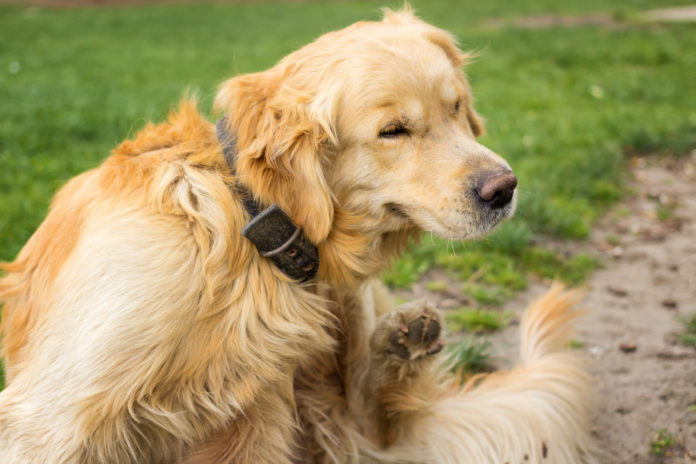Understanding allergic dermatitis in dogs

A look at allergic dermatitis, how it can affect your dog, and what you can do about it.
Allergic dermatitis is characterized by itching and sensitive, red, dry skin that leads to discomfort and even pain for the animal
Allergic dermatitis can be brought on by food, flea bites, contact allergies or environmental allergens (atopic dermatitis). Allergen avoidance is usually sufficient to resolve the situation, but in some cases, it is more complicated, such as in the case of Canine atopic dermatitis.
Canine atopic dermatitis
Atopic dermatitis is due to an immune system dysfunction and an epidermal barrier defect: the skin becomes thinner, dehydrated, porous and sensitive. It is a chronic condition, with relapsing acute episodes that require long-term management. Most dogs will first show signs between six months and three years of age.
Some breeds are known to be particularly at risk with a genetic predisposition to atopic dermatitis, including French Bulldog, Boxer, Westie, Pekingese, Bichon frise, and Retrievers.
The treatments
Canine atopic dermatitis can be managed with a variety of medications such as steroids, ciclosporine, or antihistaminic drugs. But to achieve effective, comprehensive and sustainable management of atopic dermatitis, a multimodal approach is imperative, including food, hygiene and antiparasitic control. For example, dermatologists in human medicine have been recommending the systematic use of topical moisturizers and emollients for decades in atopic patients, because they improve skin barrier function, reduce skin sensitivity, and spare the need for anti-inflammatory drugs.
Supplementation with essential fatty acids (such as Omega-6 and Omega-3) is crucial as they help reinforce the skin barrier whereas the animal is unable to produce it. Topical EFAs act directly and quickly, and are often easier to administer than oral supplements.
Natural ingredients such as phytoceramides and anti-inflammatory essential oils can also help soothe and repair the skin of atopic patients.
Another key point in atopic patients is the importance of good hygiene. Ensure your animal is routinely bathed to remove dirt, irritants, allergens and pathogens that can be responsible for skin inflammation. An adapted shampoo or rinse-free foam to help space out shampoo frequency is recommended.
Products specifically designed for atopic skin exist in various galenic forms, including:
- Spot-ons such as ATOP 7® spot-on (Dermoscent® LDCA) will help soothe and repair the allergic skin of dogs and cats. They are easy to use – just apply one pipette a week on one point between the shoulder blades
- Shampoos adapted to sensitive, irritated or allergic skins, such as ATOP 7® Shampoo, will eliminate the dirt and allergens from the skin surface while soothing and hydrating the skin.
- Foams like ATOP 7® Mousse cleanse without rinsing and thus space out shampoo frequency
- Sprays without steroids, like ATOP 7® Spray, will rapidly bring relief to itchy animals.
- Creams such as ATOP 7® Hydra Cream are ideal for nourishing and bringing comfort to localized dry areas.




